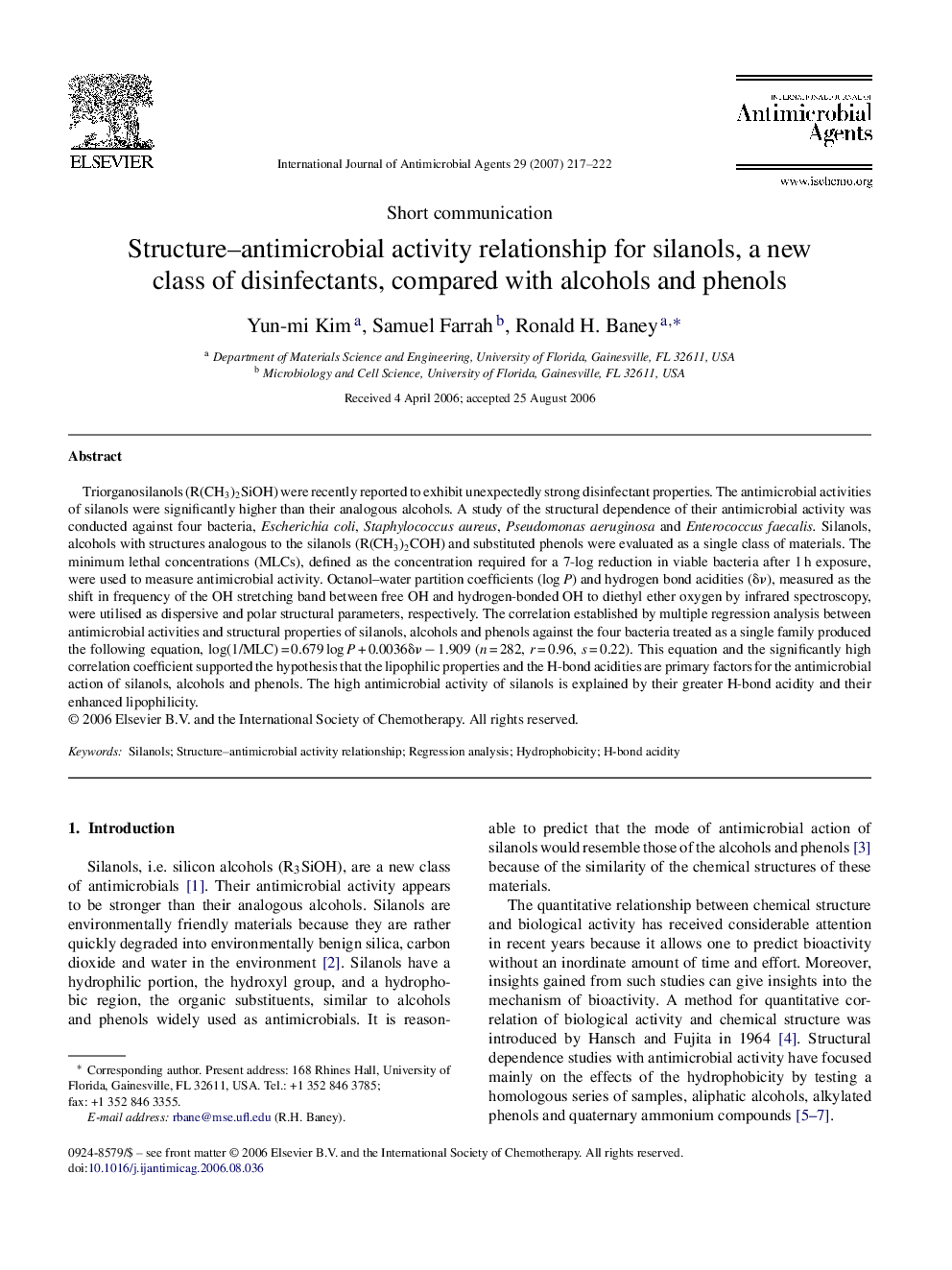| کد مقاله | کد نشریه | سال انتشار | مقاله انگلیسی | نسخه تمام متن |
|---|---|---|---|---|
| 3361392 | 1591890 | 2007 | 6 صفحه PDF | دانلود رایگان |

Triorganosilanols (R(CH3)2SiOH) were recently reported to exhibit unexpectedly strong disinfectant properties. The antimicrobial activities of silanols were significantly higher than their analogous alcohols. A study of the structural dependence of their antimicrobial activity was conducted against four bacteria, Escherichia coli, Staphylococcus aureus, Pseudomonas aeruginosa and Enterococcus faecalis. Silanols, alcohols with structures analogous to the silanols (R(CH3)2COH) and substituted phenols were evaluated as a single class of materials. The minimum lethal concentrations (MLCs), defined as the concentration required for a 7-log reduction in viable bacteria after 1 h exposure, were used to measure antimicrobial activity. Octanol–water partition coefficients (log P) and hydrogen bond acidities (δν), measured as the shift in frequency of the OH stretching band between free OH and hydrogen-bonded OH to diethyl ether oxygen by infrared spectroscopy, were utilised as dispersive and polar structural parameters, respectively. The correlation established by multiple regression analysis between antimicrobial activities and structural properties of silanols, alcohols and phenols against the four bacteria treated as a single family produced the following equation, log(1/MLC) = 0.679 log P + 0.0036δν − 1.909 (n = 282, r = 0.96, s = 0.22). This equation and the significantly high correlation coefficient supported the hypothesis that the lipophilic properties and the H-bond acidities are primary factors for the antimicrobial action of silanols, alcohols and phenols. The high antimicrobial activity of silanols is explained by their greater H-bond acidity and their enhanced lipophilicity.
Journal: International Journal of Antimicrobial Agents - Volume 29, Issue 2, February 2007, Pages 217–222